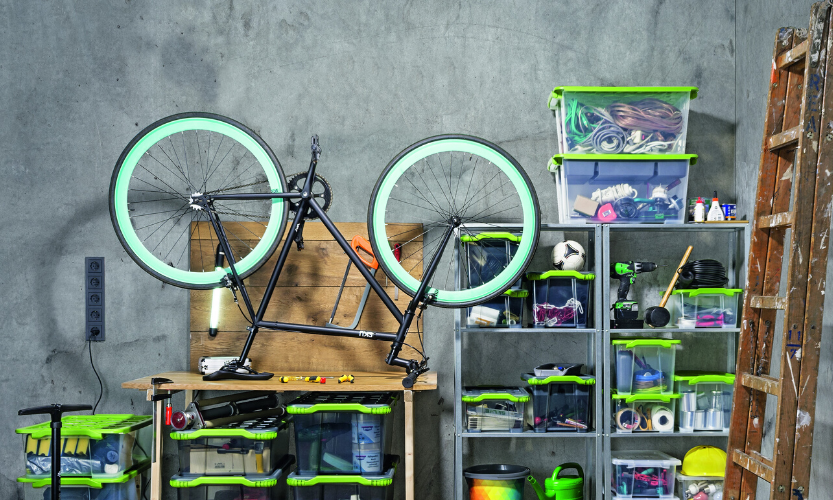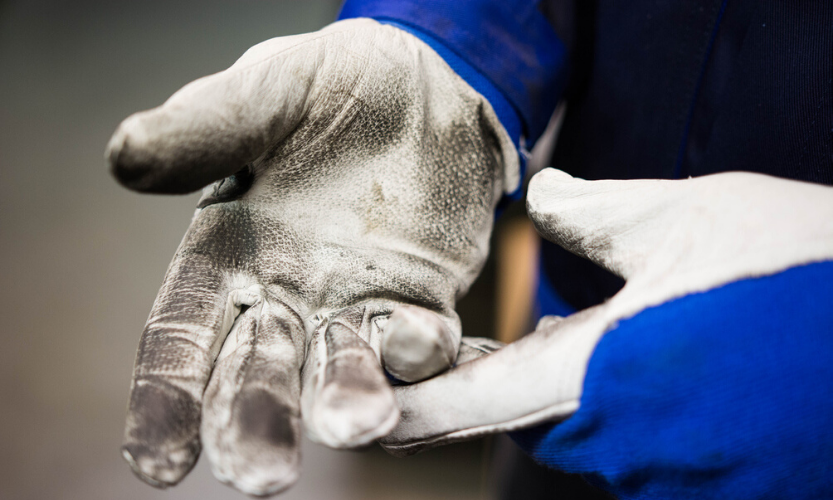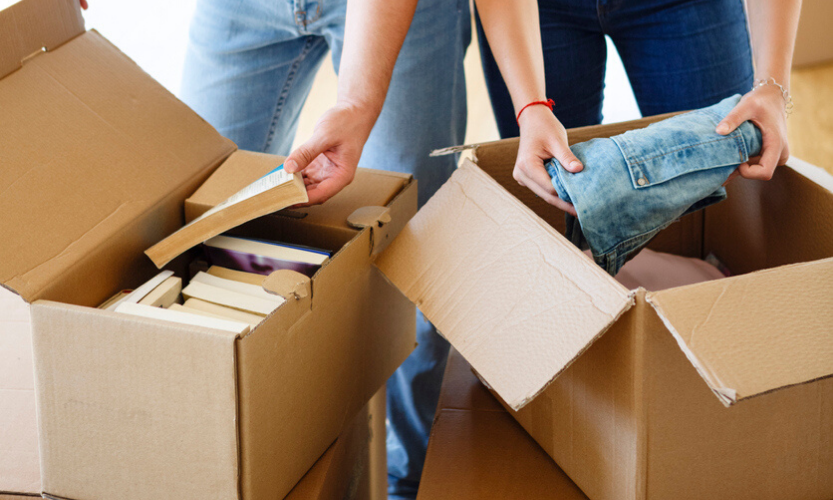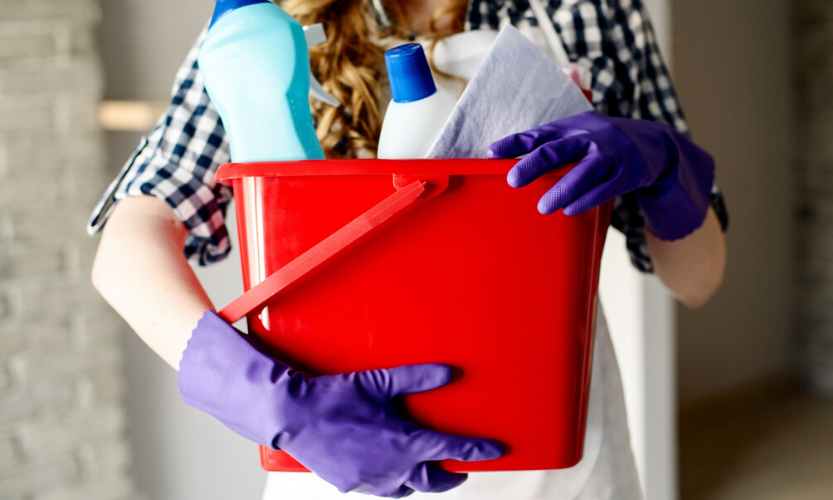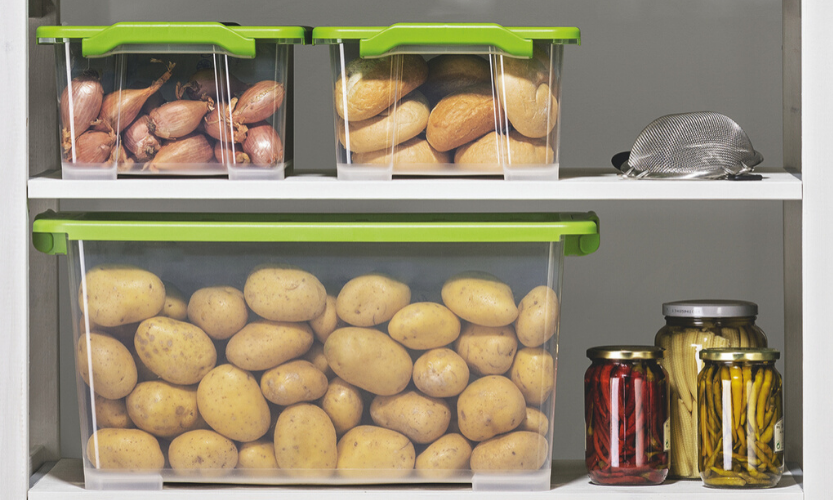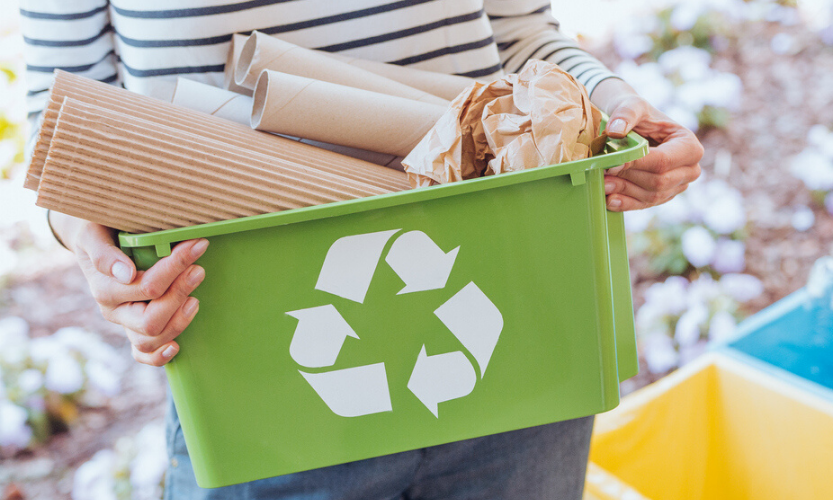Great spring cleaning is not just about washing windows and swapping winter clothes for the latest spring fashion. Many of us now have the time to tackle real problems. In garages, basements, and attics we accumulate everything we no longer need, that doesn't fit in any other room, or that we've simply forgotten about. Use our 5-step guide to avoid completely falling into chaos.
Cleaning like professionals - organizing the mess in the basement and garage
Step 1: PreparationSpontaneous cleaning in the garage or basement? This project is likely to fail due to a lack of preparation. The items being stored are often heavy and awkward. Perhaps you can involve other family members in this event or ask friends for help in getting physical support? And to be honest, the cleaning process will most likely be not only exhausting but also dirty. Therefore, you should choose appropriate clothing and protect your hands with gloves.
Spontaneous cleaning in the garage or basement? This project is likely to fail due to a lack of preparation. The items being stored are often heavy and awkward. Perhaps you can involve other family members in this event or ask friends for help in getting physical support? And to be honest, the cleaning process will most likely be not only exhausting but also dirty. Therefore, you should choose appropriate clothing and protect your hands with gloves.
Proper equipment
To ensure that the basement doesn't fall back into chaos after a week and that you can find anything in it, you should establish a certain system before you start tidying up. Boxes are usually the best choice to organize items by category and provide easy access to them. But not all boxes are the same! They should have specific features to fit perfectly into the plan.
1. If you use transparent boxes, it will be easier to check later what you are storing in them. Of course, you can also label the boxes to ensure that everything is organized.
2. Choose boxes that can be tightly closed. This protects papers or clothes from unpleasant odors, moisture, insects, and dust.
3. The most practical are boxes available in different sizes that can be safely stacked on top of each other.
4. To keep the boxes organized, you can use accessories. Fortunately, there are certain accessories that fit perfectly with the boxes.
5. When storing food, make sure that the boxes are made of safe, odorless, and BPA-free materials.
Step 2: SortingFirst, you need to designate boxes or storage places where you can sort items according to the following categories:
- Storage
- Make a donation
- Sales
- Trash or recycling
First, you need to designate boxes or storage places where you can sort items according to the following categories:
But how to decide which things to keep and which to throw away? Consider whether you have used a given item in the last few months. If not, there is a good chance that it will not be needed in the future. Still not sure? Then gather these items in a separate box and label it with today's date or the last day of use. If the last use date was a year ago during spring cleaning, you can be sure it will no longer be needed.
If possible, first gather all the items in another room. This will make the next step much easier.
Step 3: CleaningSpider webs, dust, and dirty windows: now that the room has been cleaned, it is finally possible to clean every hidden corner. It is also one of the few moments when you can repaint the walls or oil the hinges on the doors.
Spider webs, dust, and dirty windows: now that the room has been cleaned, it is finally possible to clean every hidden corner. It is also one of the few moments when you can repaint the walls or oil the hinges on the doors.
Step 4: OrganizationAfter organizing things and creating a clean space, it was time to put everything back in place in an orderly manner.
Next, recreate the categories and sort the items you have again. For example
- Sports equipment
- Gardening tools
- Car
- Tools
- Pantry
To keep everything organized, it is best to use a box system. However, shelves, baskets, and hooks can also help organize the chaos. It is important that each item has its place, and all categories are properly labeled so that you can quickly find your things.
When storing on shelves, it is best to track the weight of the items (heaviest items at the bottom) and their frequency of use (items you use most often - closest to the entrance).
After organizing things and creating a clean space, it was time to put everything back in place in an orderly manner.
Next, recreate the categories and sort the items you have again. For example
To keep everything organized, it is best to use a box system. However, shelves, baskets, and hooks can also help organize the chaos. It is important that each item has its place, and all categories are properly labeled so that you can quickly find your things.
When storing on shelves, it is best to track the weight of the items (heaviest items at the bottom) and their frequency of use (items you use most often - closest to the entrance).
Step 5: Getting rid of unnecessary thingsNow you can finally breathe a sigh of relief and be proud of yourself! The last step is to take care of the matters you have already organized. As soon as possible, take the trash to recycling and sell or donate the things you no longer need. Find a place for the items waiting for a new owner. However, be careful not to fall back into old routines and lose control of your basement or garage. Otherwise, next spring you will have to clean up the mess using Evo boxes from Rotho.
Now you can finally breathe a sigh of relief and be proud of yourself! The last step is to take care of the matters you have already organized. As soon as possible, take the trash to recycling and sell or donate the things you no longer need. Find a place for the items waiting for a new owner. However, be careful not to fall back into old routines and lose control of your basement or garage. Otherwise, next spring you will have to clean up the mess using Evo boxes from Rotho.




